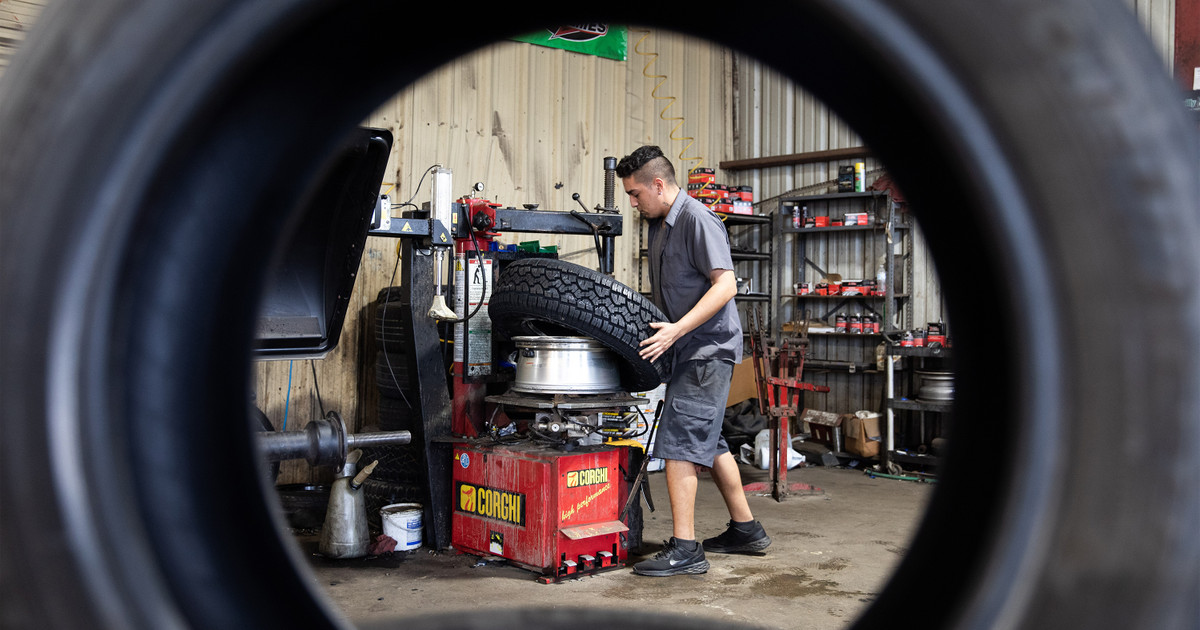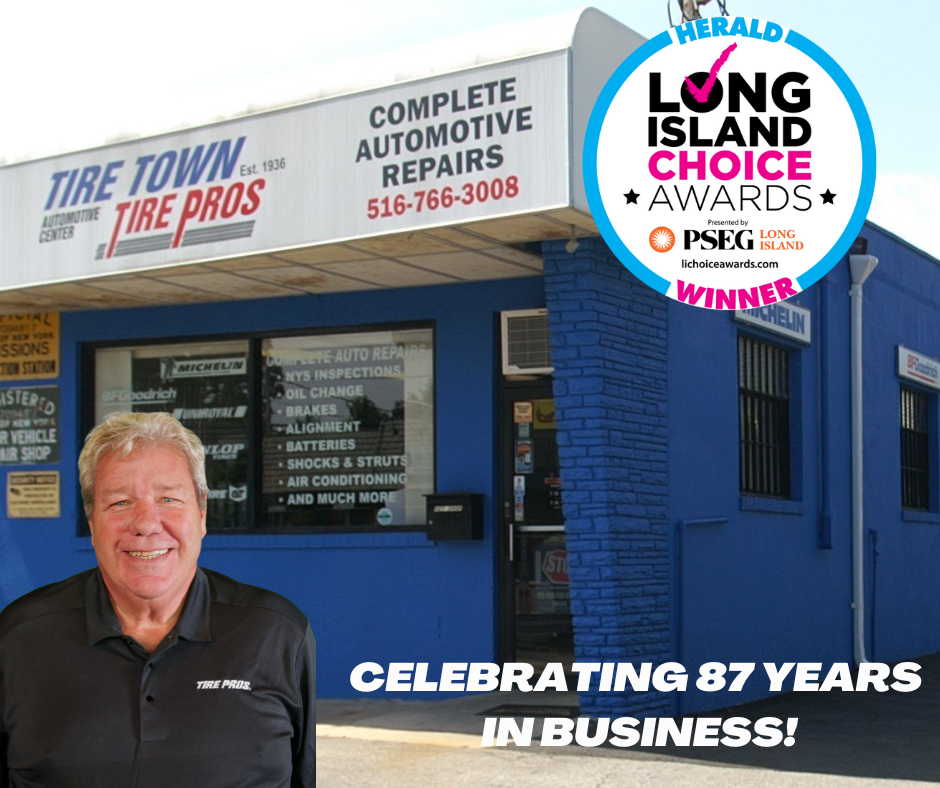Browse Efficiently with Discount Rate Tires Morris IL: Morris Tire Solution
Browse Efficiently with Discount Rate Tires Morris IL: Morris Tire Solution
Blog Article
The Science Behind Tire Repair Work and Safety
When it involves the detailed world of tire maintenance and safety, there exists a realm of science that typically stays unseen by the average chauffeur - morris tire. The products that make up a tire, the impact of tire stress on total security, the ramifications of tread wear, the elaborate characteristics of tire grip, and the often-overlooked importance of correct wheel placement all play essential functions in guaranteeing an automobile operates securely and effectively. As we browse via the intricacies of tire repair service and security, it comes to be obvious that a deeper understanding of these clinical principles is not just useful but essential for every single motorist on the road
Tire Structure and Functionality
What products make up the make-up of tires, and exactly how do these elements add to their functionality when driving? Tires are complex items, usually made from a combination of rubber compounds, textile, steel cords, and various other chemical additives. The most usual type of rubber made use of in tires is synthetic rubber, which supplies durability and resistance to tear and wear. The material layers, often constructed from polyester, nylon, or rayon, supply stamina and security to the tire structure. Steel cords are included to enhance the tire's stamina and aid it keep its shape under various road conditions.
The rubber substances provide grip and grip, enabling the tire to adhere to the road surface area and provide security throughout acceleration, stopping, and cornering. Generally, the careful selection and combination of these products ensure that tires can execute properly and securely on different roadway surfaces and conditions.
Impact of Tire Stress on Safety And Security
Maintaining appropriate tire stress is vital for making certain ideal safety and security and performance while driving. The effect of tire stress on safety can not be overemphasized. Underinflated tires are prone to getting too hot, which can lead to tire blowouts, specifically at high speeds. Furthermore, low tire pressure impacts the handling and responsiveness of the lorry, enhancing the risk of accidents, especially throughout emergency situation maneuvers. On the other hand, overinflated tires have much less contact with the road surface, reducing grip and creating unequal endure the tire footsteps. This endangers the lorry's security and stopping performance, positioning a substantial safety and security hazard. Effectively inflated tires also play a crucial role in fuel efficiency, as underinflated tires can enhance rolling resistance, leading to lowered gas mileage. Routinely checking and preserving the correct tire pressure not just makes certain security but likewise extends the lifespan of the tires, reducing substitute expenses in the lengthy run.
Tread Use and Its Implications
Correct monitoring of tire step wear is vital for making sure optimum performance and safety and security when driving. As tires wear down, the deepness of the step reduces, decreasing the tire's capability to maintain traction, specifically in unsafe or damp problems. The walk pattern and deepness play an essential role in channeling water away from the tire to stop hydroplaning and preserving grasp when driving surface area.
Unequal wear may suggest problems with tire alignment, suspension, or inflation elements. Use indicators are constructed right into the tire step and end up being noticeable when the tread depth reaches a certain low factor, showing the demand for instant replacement.

Understanding Tire Traction Characteristics
Checking tire step wear not just makes sure ideal performance and safety however also directly impacts the grip characteristics of the tires on browse around here various roadway surface areas. Tire traction is a critical aspect of automobile handling and security, as it figures out the hold in between the tires and the roadway. Grip characteristics vary depending on roadway problems such as completely dry sidewalk, wet roadways, snow, or ice.

Understanding tire traction characteristics is crucial for chauffeurs to adjust their driving habits according to the roadway conditions. morris tire. Regularly inspecting tire tread depth and condition can substantially enhance traction performance, guaranteeing more secure driving experiences throughout numerous surfaces
Importance of Correct Wheel Alignment
Making sure correct wheel alignment plays a vital duty in enhancing lorry performance and expanding tire long life. Correct wheel positioning involves changing the angles of the wheels to manufacturer specifications, guaranteeing that they are perpendicular to the ground and alongside each other. When placement is off, it can cause irregular tire wear, decreased gas efficiency, and compromised handling.
One of the essential benefits of maintaining appropriate wheel positioning is enhanced managing and stability. Misaligned wheels can trigger the automobile to pull to one side, influencing steering control and general driving experience. Additionally, proper placement promotes also tire wear, protecting against premature tire substitute and saving money on upkeep prices in the lengthy run.

Conclusion
In conclusion, the science behind tire repair service and security is critical for maintaining vehicle performance and guaranteeing vehicle driver safety. By comprehending tire composition, stress, tread wear, go to this website traction dynamics, and wheel positioning, chauffeurs can avoid mishaps and extend the life-span of their tires. Appropriate maintenance and routine assessments are vital for optimum tire performance and overall car safety and security. By adhering to these standards, chauffeurs can drive confidently knowing that their tires are in excellent problem.
The materials that make up a tire, the effect of tire stress on overall safety, the ramifications of tread wear, the detailed dynamics of tire grip, and the often-overlooked value of appropriate wheel alignment all play essential roles in making certain an automobile operates safely and effectively. On the other hand, overinflated tires have less contact with the roadway surface area, lowering traction and causing unequal wear on the tire treads. Frequently examining and maintaining the appropriate tire pressure not just guarantees security but also extends the life-span of the tires, saving on replacement prices in the long run.
Keeping an eye on tire tread wear not just ensures ideal efficiency and safety however likewise straight impacts the grip characteristics of the tires on different roadway surface areas. Tire traction is a critical facet of car handling and security, as it figures out the grip in between the tires and the roadway.
Report this page